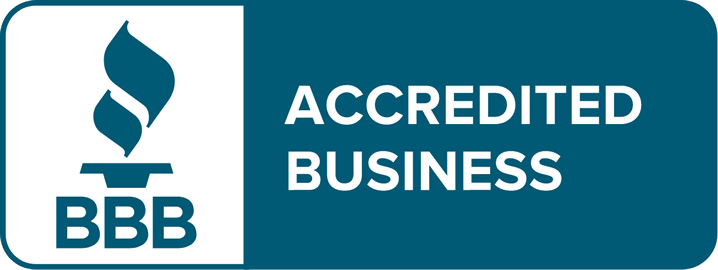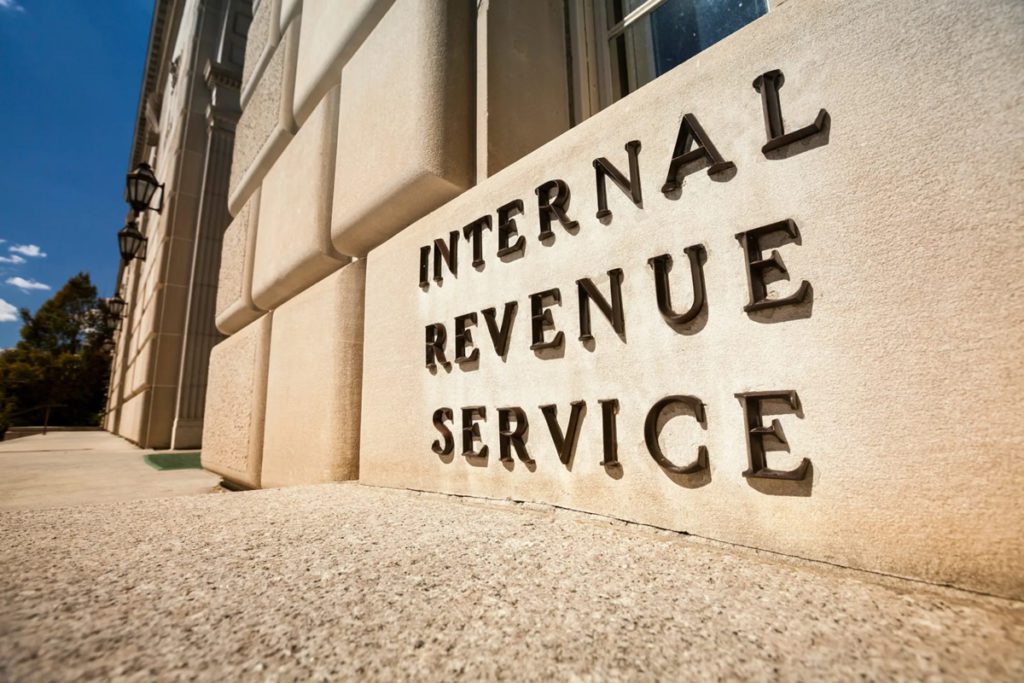2021 is not shaping up to be the best year for taxpayers hoping for tax debt relief from the IRS. A lot of headlines have mentioned that the $1.75 trillion Build Back Better program will pay for itself entirely through sweeping new tax measures.
The administration proposes that the new tax measures will raise nearly $2 trillion in revenue over the next decade through increasing taxes and closing loopholes in the tax system. The White House wants to invest $80 billion in the Internal Revenue Service to fund the IRS agents needed to fulfill the plan.
The proposal has received scrutiny on both sides of the aisle, and although it hasn’t yet passed through the Senate it’s a genuine concern to many small business owners. Some reports suggest that the new IRS workforce will not only look at the most wealthy taxpayers but will give extra scrutiny to middle-class taxpayers who comply. The fear is the additional burden of showing compliance for individuals who are in fact in compliance. It takes time and resources to prove your case, even when you’re not breaking the rules.
Along with increased pressure and scrutiny from the IRS, there have not been any significant tax debt relief measures in 2021.
In this article, we’ll take an in-depth look at your tax debt relief options for 2021, what your best options may be depending on your current financial situation.
Table of Contents
What is Tax Debt Relief?

If you’re in a situation where your taxes have become more than you can handle, you might find yourself searching for tax debt relief options. You could be overwhelmed by the amount you owe to the IRS or the complexity of the tax returns you need to file. The term tax debt relief can be confusing because it includes nuance and context always matters.
For example, if you’re facing penalties, there are certain ways that the penalties can be forgiven and mechanisms by which the IRS debt can be settled for less than taxes owed. The IRS offers different plans such as an offer in compromise and installment agreements so you can avoid wage garnishment and tax levies.
So when you think of IRS tax debt relief, think of it as having clarity on all your options and choosing the best option with confidence. Because of the complexity of the tax system, working with reputable tax relief companies often gives you the best chance to achieve the clarity you need to pursue the best IRS tax debt relief option.
Who is Tax Debt Relief Best for?

Tax debt relief is best for anybody that’s been delinquent on their taxes in the past or thinks they will be delinquent in the future. If you’ve ever filed a tax return and been unable to pay your taxes or anticipate that you won’t have the ability to pay this year, you could be a good candidate for tax debt assistance this year.
Typically when you can’t pay the full amount owed, you’ll be assessed penalties by the IRS. However, depending on the specifics of your financial situation you may be able to have those penalties forgiven.
Even if you don’t owe anything in 2021, but paid penalties in the past, you may be able to get your money back from prior years. So tax debt relief is for anybody that has been delinquent on a tax obligation in the past or intends to be in the future.
Tax Debt Relief Programs and Options

Depending on your situation you’ll have a number of tax debt relief payment options to choose from. The challenge is understanding how each option works, applying it, and understanding which option is best for your unique circumstances. If you look into these options, but find yourself confused as to which is best, a tax debt relief company can help you choose the best path with confidence.
Installment Agreements
The IRS offers installment agreements or payment plans. For most people, this is the best tax debt relief option. The IRS offers several types of installment plans.
 Guaranteed Installment Agreement
Guaranteed Installment Agreement
Guaranteed installment agreements are an option if you owe $10,000 or less to the IRS (not including interest and penalties) To qualify, you must meet the following conditions:
- Owe less than $10,000
- In the previous five years you will have filed tax returns, paid taxes owed, and not entered into an installment agreement
- You’re unable to pay the tax liability when due or within 120 days
- Your tax liability will be paid off within three years
- You must pay at least the minimum monthly payments (tax liability, interest, and penalties divided by 30)
Under this payment plan, the IRS will not file federal tax liens.
 Streamlined Installment Agreement
Streamlined Installment Agreement
In most cases, if you qualify for a guaranteed agreement you will also qualify for a streamlined installment agreement. A streamlined installment agreement has the following requirements:
- Your tax liability, interest, and penalties do not exceed $50,000
- You’re able to pay the balance off within 72 months
- The proposed payment is equal to or greater than the “minimum acceptable payment” (the minimum acceptable payment is the greater of $25 or the minimum payment amount reached by dividing the tax liability, interest, and penalties by 50)
You must pay a fee to set up the installment agreement or a reduced fee for a direct debit installment agreement. To restructure or reinstate a previous installment agreement, the IRS charges a different fee. Like a guaranteed installment agreement, the IRS will not file a federal tax lien.
 Partial Payment Installment Agreement
Partial Payment Installment Agreement
A partial payment agreement allows the IRS to enter into an agreement for the partial payment of a tax liability. To qualify for this arrangement, you must complete a financial statement using Form 433-F to report total income and living expenses.
The IRS will review and verify your information. If you have assets that can be sold to pay some of the tax debt, the IRS will require additional information. If approved, you’ll be required to participate in a financial review every two years. The review may result in an increase in installment payments or even the termination of the agreement.
 Non-Streamlined Installment Agreement
Non-Streamlined Installment Agreement
If you owe $50,000 or more and make monthly payments to the IRS, a non-streamlined agreement is another option. The IRS will not automatically approve this agreement – you must negotiate this agreement with the IRS. You’ll need to file Form 433-F which discloses information about your income, debts, living expenses, assets, and accounts.
It usually takes several months for the IRS to review a proposed payment plan. The IRS may refuse your proposed agreement if it considers some of your living expenses unnecessary, or if you failed to complete a prior installment agreement.
Get a free consultation
We Are Committed To Finding SolutionsLearn MoreWhy the IRS will Revoke an Installment Agreement

The IRS can choose to revoke an installment arrangement under the following circumstances:
- You miss a payment
- You fail to file a tax return or pay taxes after the agreement begins
- It’s shown that you provided inaccurate information on Form 433-F
- You’re paying taxes under a partial payment installment agreement and a review indicates a change in your financial position
Currently Not Collectible

Another tax relief option when you can’t pay your tax bill is filing for currently not collectible status. This puts your IRS debt into a temporary status where the IRS will not attempt to collect on it for a predetermined time. Usually, it’s around two years. After two years, the IRS will review your financial situation to see if you’re capable of paying the debt.
To qualify for this IRS tax debt forgiveness program you must demonstrate a financial hardship which, after paying for the cost of living expenses, leaves little or no room to pay off your IRS tax debt. It must be viewed as a severe economic disadvantage, not just a mild inconvenience.
Offer in Compromise

An offer in compromise is when the IRS agrees to accept less than the amount you owe on your overdue tax bill and call it good. To qualify for an offer in compromise you must show the IRS that one of the following conditions exists:
- There is doubt as to whether the IRS can collect the tax bill from you now or in the foreseeable future. This IRS calls this “doubt as to collectibility.”
- Due to exceptional circumstances, payment of your full tax bill would cause an “economic hardship” or would be “unfair” or “inequitable.”
There is also a more rarely used route called “doubt to liability.” To pursue this angle you must file a Form 656-L. This offer is based on your claim that there is doubt that the tax liability is correct.
The IRS recommends you start by using its online pre-qualifier tool to determine whether you are eligible to make an offer in compromise.
Penalties and Interest Abatement

There are over 150 different IRS penalties for late filing, late payment, return errors, and other non-compliant activity. The three most common IRS penalties are related to late filing and late payment of taxes.
These penalties include:
- The failure to file penalty: 5% per month on the balance due, with a maximum of 25%
- The estimated tax penalty: Equal to the interest lost by not having sufficient withholdings or paying estimated taxes throughout the year.
- The failure to pay penalty: 0.5% per month of the balance due, with a maximum of 25%
The IRS will forgive penalties on two different grounds. The first one is a first-time penalty abatement. The first time you have a delinquency they’ll forgive it, no questions asked. You usually have to request it, but once requested the IRS will forgive the penalty.
The other way to ask for penalty abatement is through reasonable cause. If the reason you were delinquent on your taxes was reasonable according to the IRS, and it was not intentional, then there’s a chance the IRS will forgive those penalties as well.
Penalty abatement is simply removing the penalties after they are assessed. Failure to File (FTF) and Failure to Pay (FTP) penalties generally require abatement because the IRS assesses these penalties electronically when a tax return is filed, or a transaction is made on a balance due account.
Other penalties are proposed during IRS audits and investigations. These include accuracy or fraud penalties, and usually require you to deal with IRS auditors or appeals officers prior to the assessment of the penalty. Taxpayers can request abatement of return accuracy penalties after they are assessed, but the abatement process may require using special IRS procedures or taking the IRS to court. This can take years to resolve.
Levy Releases

Generally, an IRS tax levy means the IRS has chosen to seize your assets and use them to satisfy your tax debt. Most often, the IRS will use a bank levy to take money as you earn it directly from your employer. Less commonly, they will sell your property in order to use it against your tax debt.
With the help of a qualified tax professional, you may be able to convince the IRS that a wage levy is causing you immediate economic hardship and that the wage levy should be released. This could put more money back into your paycheck and take away some of the financial hardship you’re experiencing.
Keep in mind if an IRS wage levy release is granted, this does not mean your tax debt is erased. You still owed the IRS. The wage levy simply means the IRS has agreed to stop taking money out of your paycheck for the time being.
Lien Subordination and Discharge

A tax lien is not an immediate collection – you still get to keep your property. However, you may not be able to sell or refinance your property unless you eliminate the tax lien.
You may request a lien discharge or lien subordination. A tax lien discharge completely removes the lien from a specific piece of property. A Federal tax lien subordination keeps the tax lien in place but permits another creditor to move ahead of the IRS in priority. A subordination may allow you to get a loan or refinance your mortgage.
Working with a tax relief company gives you the best chance to successfully navigate the process of getting a lien subordination or discharge awarded.
We Are Committed To Finding Solutions
Learn MoreWhat is Innocent Spouse Relief?

Under federal tax law, married couples may choose to file their income tax returns jointly or separately. There are advantages to both. However, when filing jointly, both individuals are liable for all of the tax debts associated with a joint return.
This means the IRS has the legal right to go after either spouse to collect on a tax debt. It doesn’t take much thought to see how this can be unfair. If one spouse commits illegal or illicit acts without the other spouse’s knowledge they can qualify for innocent spouse relief and not be held liable.
State Tax Relief Programs

States offer amnesty programs to give taxpayers an opportunity to pay back a certain amount to the state, generally in one lump sum payment. Once paid, the transaction forgives certain tax liabilities accrued from previous tax periods.
This forgiveness can include interest and penalties. It also allows taxpayers to drop the fear of being criminally prosecuted.
Amnesty is defined as an official pardon, so it’s literally a chance for taxpayers who owe back taxes to pay back their taxes without the corresponding penalties and interest. It may be offered to all residents in a certain state – there is no universal federal tax amnesty program. Specifics of these programs will vary state to state.
The Employer Retention Tax Credit

The employer retention tax credit is a form of tax relief that not many businesses owners are aware of. It can be worth up to $26,000 per employee. There’s various criteria which may make a business owner qualify for this massive tax relief credit, but in general, if you had employees throughout COVID, it’s worth taking the time to work with a tax relief professional to see if you qualify.
How to Determine if a Tax Debt Relief Firm is Legitimate or a Scam

As you start your search for companies that can help with back taxes and settling tax debt for less you’ll find a lot of options. Some falsely advertise that debt forgiveness is a guarantee if you hire them or they can get rid of your unpaid overdue taxes with a special program.
The reality is taxpayers who owe thousands of dollars may avoid certain tax penalties, but a legitimate tax services company will never tell you they can make it all disappear for you without first determining if you qualify financially. If you want a fresh start working with a tax relief company can help if they’re experienced.
Just like researching any service provider, it’s always good to start with company reviews on Google, the BBB, and other online review platforms. Take a look at their time in business. Have they been around for a year or two, or a couple of decades? If they’ve made it 20 plus years that tells you a lot.
A legitimate firm will offer an initial free consultation with a licensed tax professional. If you’re speaking to a licensed enrolled agent, you can feel more confident that you’re dealing with a legitimate tax debt relief company.
Need Help Navigating Your Tax Debt Relief Options for 2021?
20/20 Tax Resolution are nationwide licensed tax professionals. 20/20 Tax Resolution has helped over 32,000 businesses and individuals reach successful resolutions with their IRS and state tax liabilities.



